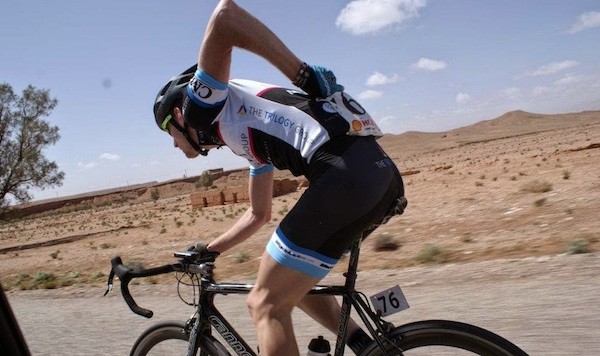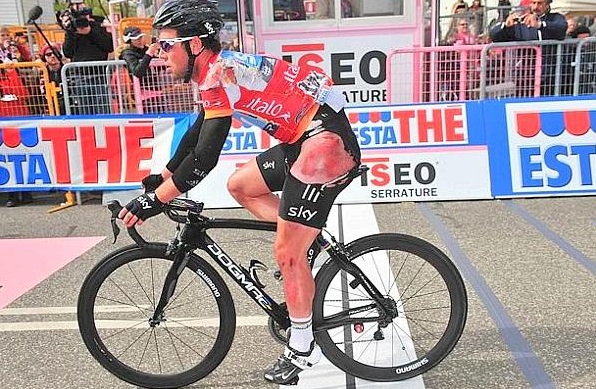We all know the wonderful feeling of cycling, but unfortunately it’s not always sun on the face and wind in the hair. Pedalling is a low-impact motion, making cycling one of the best ways to stay fit without putting stress on your joints. However, poorly set up bikes, wipe outs, or simply the activity of cycling itself can take its toll on our bodies. Injury is a part of almost every sport, and cycling is no exception, but it’s also what makes it a challenge worth taking on. Although some injury is impossible to avoid, there are things you can do as a cyclist to minimize the risks and stay in your saddle for years to come. Here are some of the common risks and what you can do to prevent injury cycling.
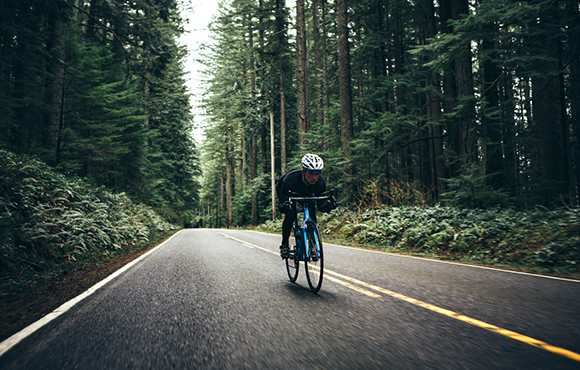
Safety First
As cyclists we share the road with vehicles, and we have to do all we can to ensure the two can co-exist safely.
- Maximize visibility – Assume that you are invisible to motorists. Do whatever you can can to enhance your chances of being seen to avoid accidents. Ride where people and cars see you, wear bright
 clothing, use lights and reflectors. Whenever possible, make eye contact with other cyclists and pedestrians. The article “Bikes Versus Cars, How to Ride in Traffic” can give more insight into safely riding with traffic.
clothing, use lights and reflectors. Whenever possible, make eye contact with other cyclists and pedestrians. The article “Bikes Versus Cars, How to Ride in Traffic” can give more insight into safely riding with traffic. - Obey the rules of the road – Road bikes are subject to the same laws as motorists, follow them. You have the same rights and duties as drivers. Your safety, and the well-being of those around you depends on you interpreting the law in a predictable manner. Obey traffic signals and stop signs, and use hand signals to communicate any changes in speed or direction.
- Be alert – Always pay attention to your surroundings and the road ahead. Look out for any obstacle or pot holes on the road to avoid any unexpected bumps. These can catch you off guard and cause a wipe out.
How To Prevent Injury Cycling
Broken Bones
The two most common broken bones for a cyclist are the clavicle (collarbone) and the scaphoid (a thumb bone). These are the bones that absorb the most force when you brace yourself in a fall. The obvious thing would be to avoid crashing altogether, but sometimes that is simply impossible. As you can’t really control whether or not you crash on your bike, you should at least know how to fall properly. It depends on what kind of crash is happening, for instance if you are going over the handle bars, try and get your hands out in front of you to brace your fall, tuck your head in and allow yourself to roll over the shoulder that has the leading arm out.
Road Rash
Sooner or later everyone will experience road rash, it’s a part of cycling, and almost a rite of passage into the cycling world. How you first handle your wounds will make all the difference in the amount of time it takes to recover. Treating the wounds correctly will save you a lot of pain and suffering if done the right way. Check out this detailed article on treating road rash to help make the process less painful and get you back on the road quicker.
Saddle Sores
Avid cyclists know this injury well. Saddle sores are caused by the friction between your skin and the bike seat during long bike rides. A bike seat that is too high and bike shorts that are too old with minimal protection are the most common secondary causes of saddle sores. You can avoid saddle sores by using chamois cream while you ride, especially if you’re a cyclist that moves around a lot. If you do develop saddle sores, you’ll likely have to take a break and treat with skin creams to ease the pain.
Lower Back Pain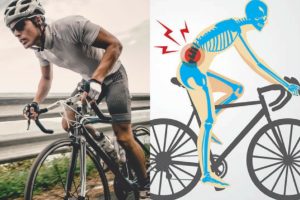
Another very common cycling overuse injury is lower back pain. First, you have to understand why this occurs before taking action to fix it. While pedaling, the quadriceps pull the pelvis forward. To keep your body on the bike, your lower back resists that pull. It is an action that is not inherent to the design of your lower back muscles. The result is overworked lower back muscles that may cross into pain.
The best way to both prevent and treat lower back pain from cycling is to work on strengthening your core (transverse abdominal muscles) and glutes. A strong core will activate before any movement takes place in the limbs (like pedaling), and therefore takes the stress away from lower back and works to stabilize the motion.
Neck Pain
Neck pain can be caused by fatigue (just like lower back pain) or a poor bike fit and can be alleviated by strengthening exercises, stretching and a proper bike fit. Also, relax during your ride. A tight grip and tense posture will cause more pain in your neck than with a relaxed posture.
Numb Hands
Your hands go numb when nerves are being pinched, generally due to a poor position on the bike causing your hands to support too much of your weight or your hand position or wrist position is incorrect. To alleviate this common cycling injury tilt the nose of your saddle up a degree, make sure that your wrists and hands are flush with your forearms (no bends), and buy some gloves and better handle bar tape to spread out the pressure.
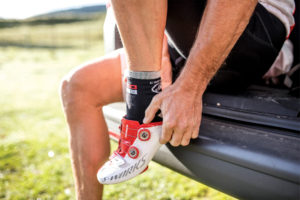 Foot Numbness or Tingling
Foot Numbness or Tingling
Foot numbness usually occurs when the nerves between the bones under the ball of the foot become compressed. Besides numbness, symptoms can show up as cycling foot pain, tingling, bruising, or even a burning sensation. The likely culprit here is shoe fit, cleat position or socks. Particularly if the cleat is too far forward it can cause numbness, as it places pressure on the ball of your foot. Take the time to dial in your cleat placement, shoe fit and sock choice whether on your own, or with a professional bike fit.
Knee Pain
There are different types of knee pain that can point to different causes and, therefore, different solutions. The four main types of knee pain are anterior (front of the knee), posterior (behind the knee), medial and lateral pain (sides of the knee), and IT band syndrome. Some knee pain is a sign of an improper bike fit, whether it be cleat or saddle position, while some is caused by simple overuse or going too hard too soon. Regular and targeted stretching can be an easy solution.
Achilles and Patella Tendinitis
Another common injury that comes from overuse. However, this can also be caused by a poor bike fit and shoe cleats that are not properly positioned. Achilles tendinitis causes inflammation which in turn will cause you pain in your ankle. If you think this is developing, go easy on your training for a few days. After any exercise make sure you apply ice to the tendon to fight any inflammation you may have.
General Treatment and Prevention
Stretching
The most important thing for cyclists, and athletes in general, is to have a healthy range of motion and flexibility to move freely and efficiently. Stretching routines for cyclists can aid in aligning the thick and thin muscles back into their ordered state after movement, as well as remove the lactic acid buildup that causes soreness. Flexibility, or rather inflexibility, can lead to unbalance in the body and even cause the body’s structure to move out of alignment. Failing to properly stretch and maintain flexibility can not only affect you performance, but it will inevitably lead to injury and discomfort.
Strength Training
A common problem with cyclists is muscular imbalance. Some muscles become strong, while others are too weak to keep things balanced. By strengthening your muscles and connective tissues with strength training, you can keep your body balanced and even avoid some overuse injuries altogether. It can also help you maintain proper posture on the bike, as a strong core can keep your back nice and straight.
Bike Fit
Getting a proper bike fit is well worth the investment, or at least taking the time to fine tune things yourself. Getting everything adjusted just right for you will ensure you will be comfortable on the bike. You will be more efficient and have a higher degree of power and endurance. It can be overwhelming when you think about saddle height and angle, cleat position, handlebars, and so on, but it is worth taking it one piece at a time. It will lower the risk of developing any injuries associated with an improper bike position.
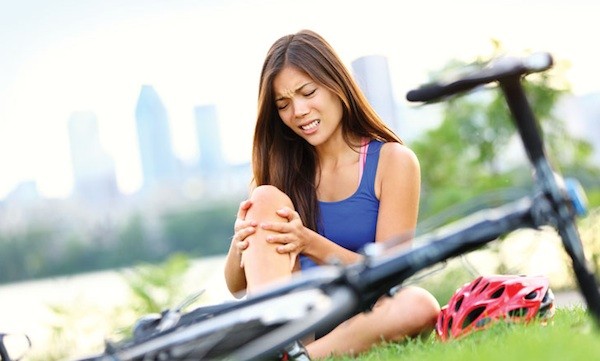 The more that you ride, the more likely common cycling injuries are going to happen to you. It’s not really an if, but rather a when. With proper preventative maintenance, such as
The more that you ride, the more likely common cycling injuries are going to happen to you. It’s not really an if, but rather a when. With proper preventative maintenance, such as 